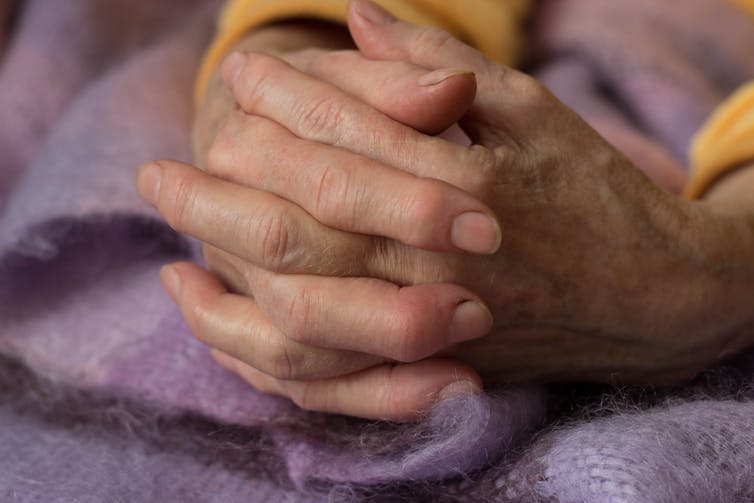Australians are living longer. But not everyone wants to live as long as they can. People sometimes have good reasons for wanting to end their lives: they may be suffering from a terminal illness; they may be experiencing unbearable pain; or they may have decided their life has gone on long enough.
A well-constructed legal framework could ensure Australians who make a rational decision to end their life can get the assistance they need to do so, while protecting people from the dangers opponents of euthanasia fear.
Some worry that legalising voluntary euthanasia will take us down a slippery slope to state-sanctioned murder. If a society allows doctors to kill or assist in the death of people who find their lives intolerable, then what is to stop it from allowing them to kill the senile, the disabled or others who are judged not to have lives worth living?
Some fear that legalising euthanasia means that greedy relatives will start pressuring old people to ask for death. Others worry that making doctors into agents of death will undermine their primary duty to preserve life.
So far those who oppose voluntary euthanasia have won the political battle. It is illegal for doctors in Australia to grant requests of patients who want to die or to assist them in committing suicide. But in Australia, as in other countries, doctors do sometimes allow their patients to die when further treatment would only prolong suffering.
Lessons from the Netherlands
Since 2002, Dutch law has allowed doctors to grant requests for euthanasia or assisted suicide without being prosecuted, provided conditions are met: patients must request death and they must be suffering unbearable anguish with no end in sight. Two independent doctors must be consulted. And afterwards, the doctors must report to a committee of review.
The law allowing euthanasia is popular. A majority of doctors and 95% of Dutch people support it, according to recent surveys.
From the beginning, the law had its critics. The UN Human Rights Committee worried that reviews only take place after life has been terminated. But a report published in the Lancet medical journal shows that the system is not having the results many people feared.
An extensive survey of doctors in the years preceding and following the introduction of the law shows the law did not prompt an increase in cases of euthanasia. In 2010, deaths by euthanasia or physician assisted suicide were 2.8% of the total number of deaths in the country. This is a slight increase from 2005 but is no higher than before the law was introduced.
Ending life without the explicit request of a patient happens less often now than it did in 2005 or before the law was enacted. The authors of the report conclude that the euthanasia law in the Netherlands has resulted in a transparent practice not seen in other countries.
There has been no epidemic of euthanasia in the Netherlands. The law has not encouraged doctors to euthanise people against their will. And there is no sign that relatives are using the law to hound old people to their deaths.

The Dutch experience shows that laws can successfully regulate voluntary euthanasia and physician-assisted suicide. However the law does not accept requests to die from people who fear the disabilities of old age or think that their life is complete.
Some Dutch citizens think people over 70 ought to be able to request death under strict provisions. They propose a system where those who want to end their lives would have to consult specially trained health care professionals. They would have to show that their desire to die is rational and not the result of depression or impulse. All cases would have to be reviewed by a committee, as is now the case for voluntary euthanasia.
An Australian framework
Legislation in Australia could make use of and improve on the proposed Dutch model. Those who want to end their lives could be required to attend psychological counselling conducted by professionals with special training. Their request would need to be approved by an ethics committee appointed by the government. Perhaps the law would also require a “cooling off period” of six months or more before their request could be fulfilled.
Any proposal for a law that allows doctor-assisted suicide for older people has a lot of hurdles to get over. We would not want a system that encourages neglect of the aged or the running down of services for elderly people. We certainly don’t want anyone to think that encouraging elderly people to ask for death is a good way of dealing with the problem of an increasing population of old people or the shortage of medical facilities.
But these fears are not a reason for refusing to consider how we can respond to those who have a rational reason for wanting to die. They should be able to end their lives without pain, anxiety, or law-breaking and the risk of prosecution.
We are at the beginning of a discussion about how the law should respond to the widespread support from Australians for legalising voluntary euthanasia.
Later this year the Tasmanian Parliament proposes to debate a private members bill which, if passed, would legalise voluntary euthanasia for some people with terminal illnesses. This may be the first step.

